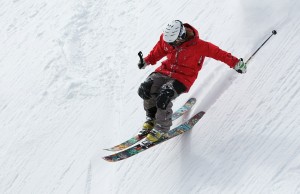Snow Sports Injuries and How To Treat Them
 Winter temperatures and snow typically compel a lot of people to stay inside. For many athletes, this is not the case, and they love to play snow and winter sports. In cold weather, ice and snow, certain injuries are more likely to happen. They are also more likely to happen in Alpine climates and the west and northwest where skiing is popular. Here are five common winter and snow sport injuries and treatments.
Winter temperatures and snow typically compel a lot of people to stay inside. For many athletes, this is not the case, and they love to play snow and winter sports. In cold weather, ice and snow, certain injuries are more likely to happen. They are also more likely to happen in Alpine climates and the west and northwest where skiing is popular. Here are five common winter and snow sport injuries and treatments.
Dental Injuries
Amateur and professional skiers, snowboarders, and hockey players are plagued with chipped teeth and teeth completely knocked out, according to the Swiss Dental Journal. They are especially common for athletes that choose to not use mouth guards and other protective gear. The best treatment for these injuries is mostly cosmetic. There are a lot of dentists in areas where winter sports are common such as, Kyle J Frisinger DMD. Finding a dentist in your area that will listen to your concerns is recommended when deciding on a treatment plan.
ACL Injuries
Bad falls in competitive sports or for solo enjoyment, such as snowboarding and skiing lead to a variety of joint injuries. For example, bad falls on errant skis or snowboards lead may lead to knee injuries like damaging the ACL. Damaged ACLs can require extensive treatments and even surgery. Surgery is often followed by an extended recovery time full of special exercise, recovery devices, and intensive physical therapy.
Concussions
Concussions can happen in any sport, but they are common in several different snow sports. They can be light or severe, but concussions are always serious. According to the Mayo Clinic, monitoring and rest are the most effective form of treatment. Tylenol can be used for headaches, but anti-inflammatory drugs should be avoided because they may cause bleeding in the brain.
Hypothermia
According to better health, hypothermia happens when your core body temperature drops below 95 degrees Fahrenheit. Hypothermia happens more often than people realize while playing winter sports outside. Treatment can mean simply moving indoors and warming up the person up for light hypothermia. In the event of someone getting wet from falling through ice or snow melting through layers of clothes, it’s best to remove all wet clothing and apply warm blankets to move the body temp up as fast as possible, however, in severe cases, emergency services should be called.
Blisters and Rashes
Often, socks get wet from snow, and the friction from wet socks or other garments and loose footwear can cause mild to severe blisters and rashes. The Mayo Clinic recommends washing the affected area well and popping the blister with a sterilized needle. Afterwards, apply some sort of soothing ointment or antibiotic ointment and wrap the area.
These are just five common snow and winter sports related injuries. Some of them are very minor, and some are quite serious. If you are ever in doubt, going to the hospital for immediate medical treatment is the safest bet. Finally, keep in mind one very important thing, these are only five of many. Snow sport injuries vary, and the cold does things to the body, which cause different reactions versus the same circumstances in warm weather. Have fun but be safe.